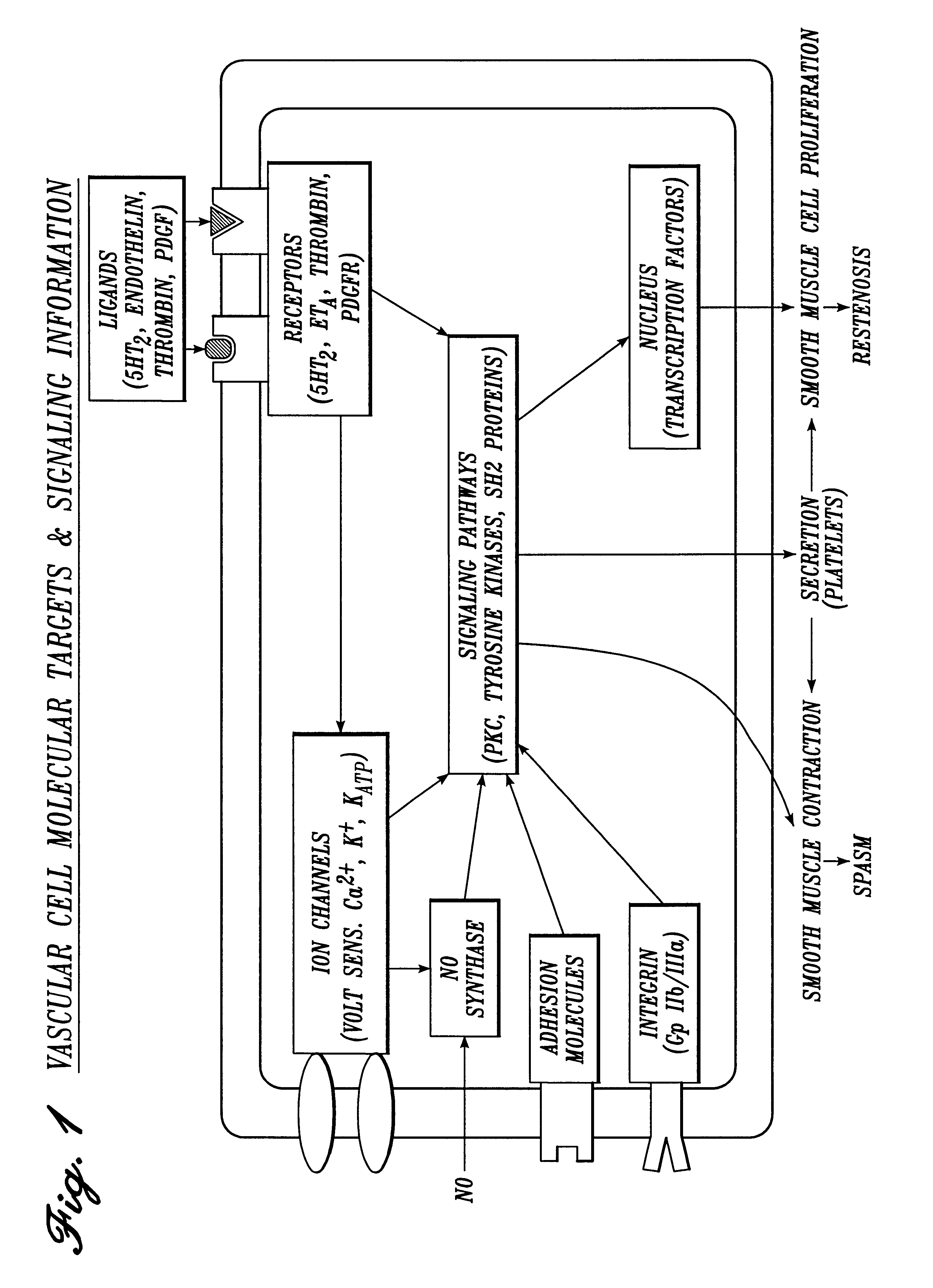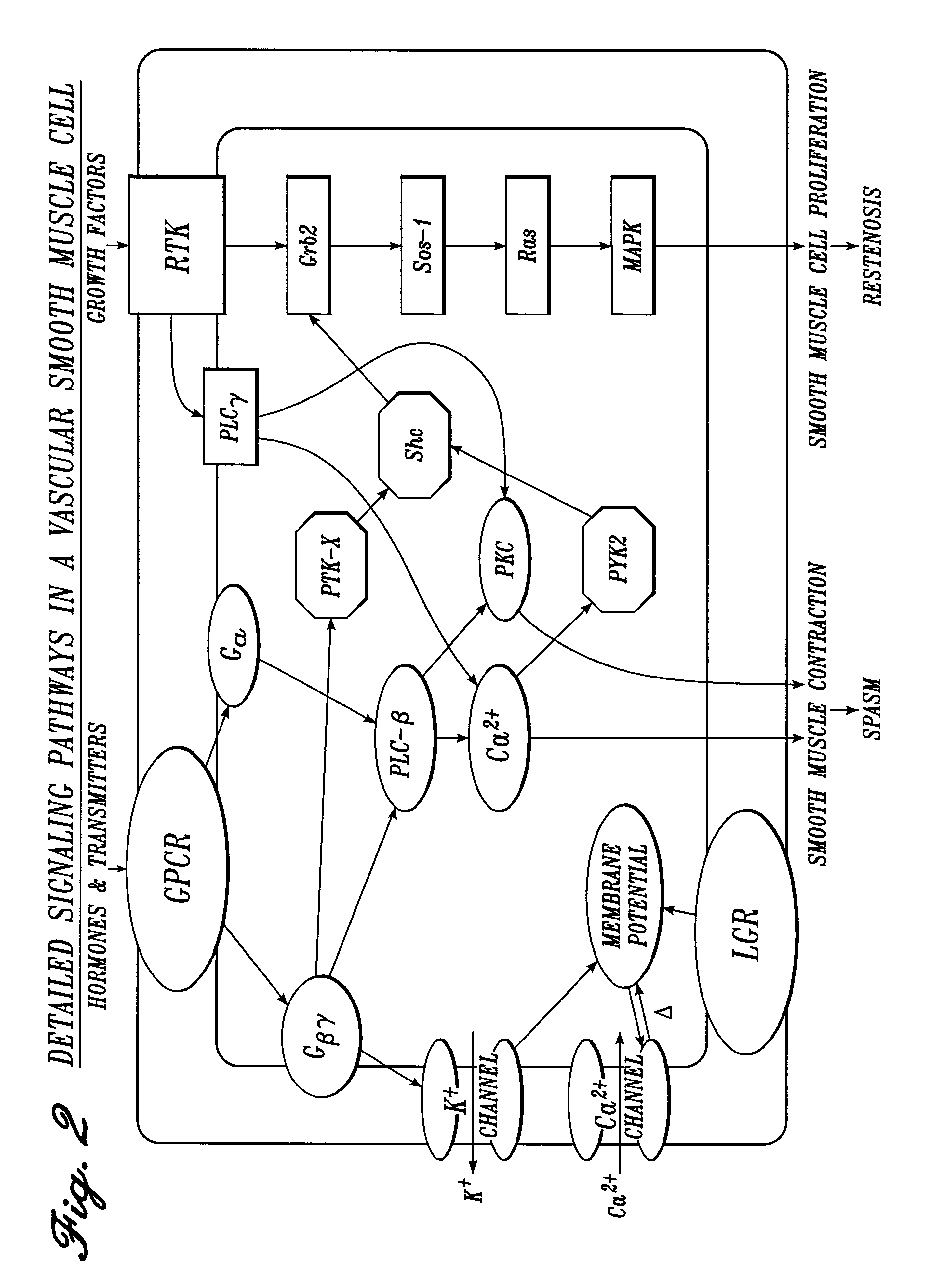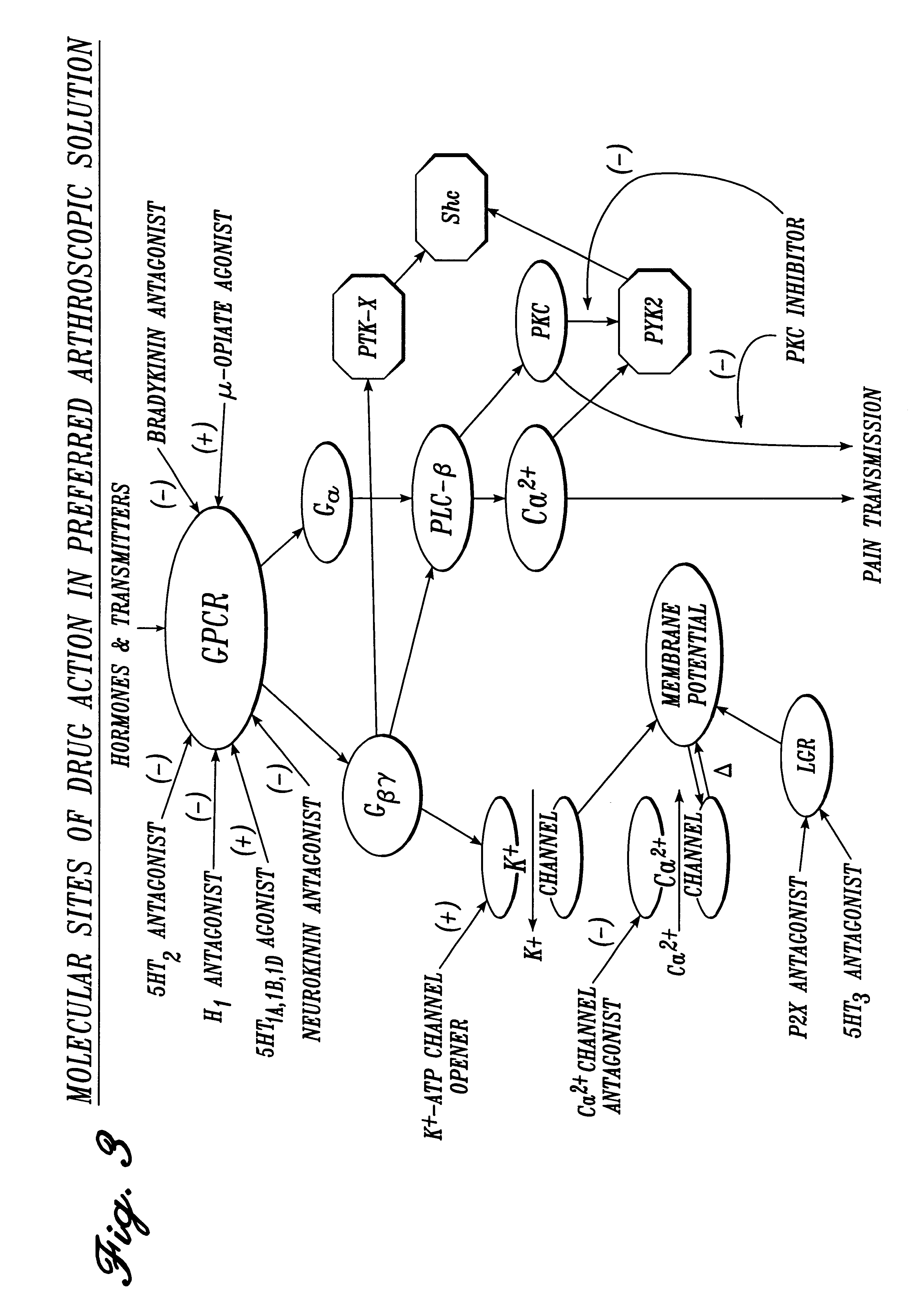The advantages of
low dose applications of agents are three-fold. The most important is the absence of systemic side effects which often limit the usefulness of these agents. Additionally, the agents selected for particular applications in the solutions of the present invention are highly specific with regard to the mediators on which they work. This specificity is maintained by the low dosages utilized. Finally, the cost of these active agents per operative procedure is low.
The advantages of local administration of the agents via luminal irrigation or other fluid application are the following: (1) local administration guarantees a known concentration at the
target site, regardless of interpatient variability in
metabolism,
blood flow, etc.; (2) because of the
direct mode of delivery, a therapeutic concentration is obtained instantaneously and, thus, improved dosage control is provided; and (3) local administration of the active agents directly to a wound or operative site also substantially reduces degradation of the agents through
extracellular processes, e.g., first- and second-pass
metabolism, that would otherwise occur if the agents were given orally, intravenously, subcutaneously or intramuscularly. This is particularly true for those active agents that are peptides, which are metabolized rapidly. Thus, local administration permits the use of compounds or agents which otherwise could not be employed therapeutically. For example, some agents in the following classes are peptidic:
bradykinin receptor antagonists; tachykinin
receptor antagonists;
opioid receptor agonists;
CGRP receptor antagonists; and
interleukin receptor antagonists. Local,
continuous delivery to the wound or operative site minimizes
drug degradation or
metabolism while also providing for the continuous replacement of that portion of the agent that may be degraded, to ensure that a local therapeutic concentration, sufficient to maintain receptor occupancy, is maintained throughout the duration of the operative procedure.
Local administration of the solution perioperatively throughout a surgical procedure in accordance with the present invention produces a preemptive
analgesic, anti-inflammatory, anti-spasmodic or anti-restenotic effect. As used herein, the term "
perioperative" encompasses application intraprocedurally, pre- and intraprocedurally, intra- and postprocedurally, and pre-, intra- and postprocedurally. To maximize the preemptive anti-inflammatory,
analgesic (for certain applications), antispasmodic (for certain applications) and antirestenotic (for certain applications) effects, the solutions of the present invention are most preferably applied pre-, intra- and postoperatively. By occupying the target receptors or inactivating or activating argeted enzymes prior to the
initiation of significant operative trauma locally, the agents of the present solution modulate specific pathways to preemptively inhibit the targeted
pathologic process. If inflammatory mediators and processes are preemptively inhibited in accordance with the present invention before they can exert
tissue damage, the benefit is more substantial than if given after the damage has been initiated.
Inhibiting more than one inflammatory, spasm or restenosis
mediator by application of the multiple agent solution of the present invention has been shown to dramatically reduce the degree of inflammation, pain, and spasm, and theoretically should reduce restenosis. The
irrigation solutions of the present invention include combinations of drugs, each solution acting on multiple receptors or enzymes. The
drug agents are thus simultaneously effective against a combination of
pathologic processes, including pain and inflammation,
vasospasm,
smooth muscle spasm and restenosis. The action of these agents is considered to be synergistic, in that the multiple receptor antagonists and inhibitory agonists of the present invention provide a disproportionately increased
efficacy in combination relative to the
efficacy of the individual agents. The synergistic action of several of the agents of the present invention are discussed, by way of example, below in the detailed descriptions of those agents.
Used perioperatively, the solution should result in a clinically significant decrease in operative site pain and inflammation relative to currently-used
irrigation fluids, thereby decreasing the patient's postoperative analgesic (i.e.,
opiate) requirement and, where appropriate, allowing earlier patient mobilization of the operative site. No extra effort on the part of the surgeon and operating room personnel is required to use the present solution relative to conventional
irrigation fluids.
 Login to View More
Login to View More 


